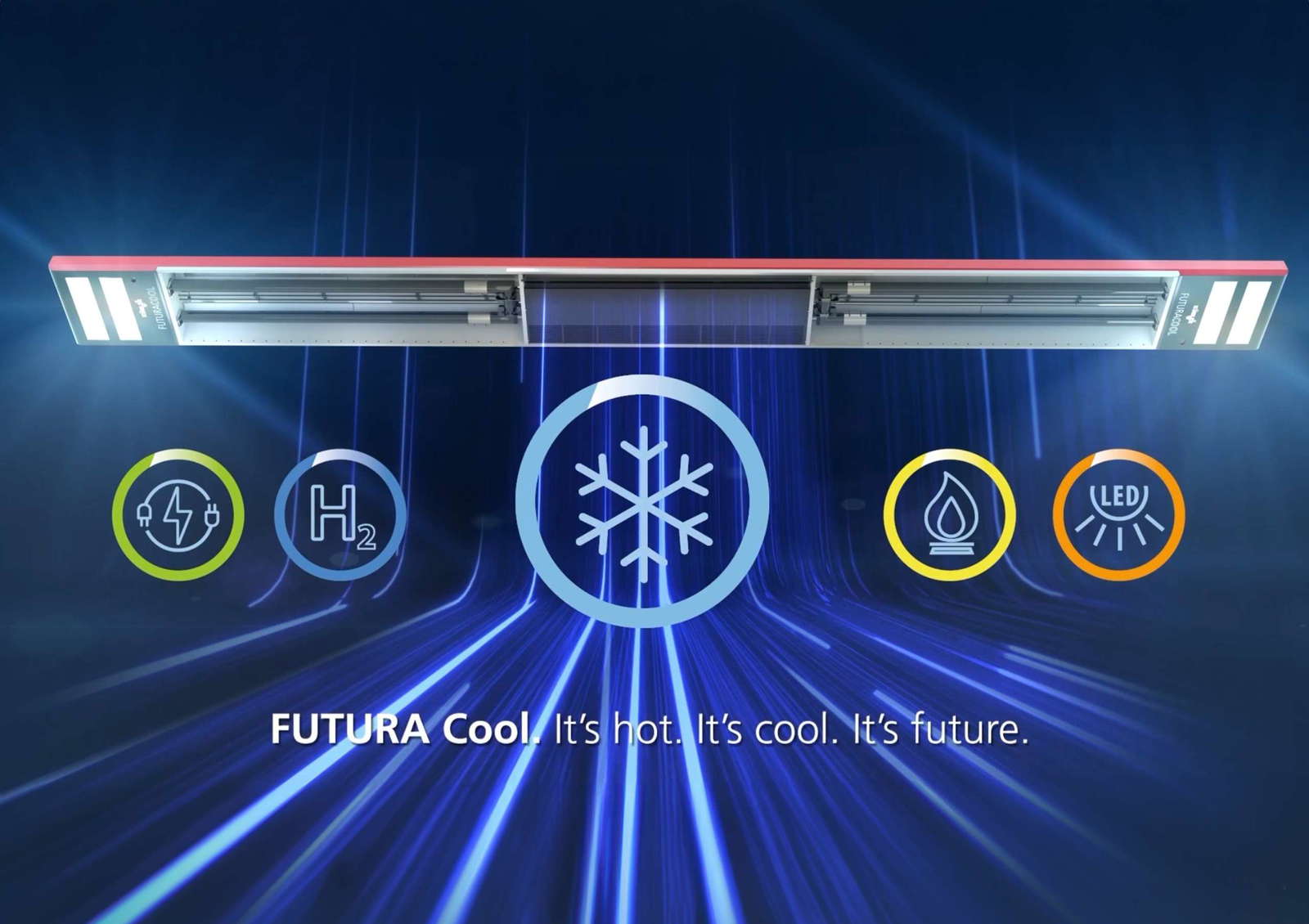Energy turnaround: World innovation honored in Mainz

FUTURA heats industrial halls regardless of the energy source - special award "Innovative technologies for climate protection" in the SUCCESS technology competition
"I am deeply convinced that we can only avoid a national energy crisis with a joint effort. Together - that means that all protagonists have to get involved. Everyone should play their part and contribute their expertise to the process," says Thomas Kübler, founder, partner and Managing Director of KÜBLER GmbH. "We have been doing this for decades now and are delighted that, especially in the current situation, we have developed a technology with FUTURA that can make a decisive contribution to the energy transition."
FUTURA is a bridge to the carbon-free era: regardless of whether green hydrogen or electricity determines the future, FUTURA can do both - and more: the infrared heating system also uses biogas, natural gas or liquid gas and allows you to switch variably between the energy sources. This works both in mono mode and in mixed mode. Depending on which energy is currently available or particularly cost-effective. "We thus ensure security of supply and stabilize the grids," says Kübler. "But above all, our solution is economical. Infrared is the ideal way to heat large rooms." This refers in particular to halls with a height of four meters or more.
The FUTURA is installed on the hall ceiling. The infrared heater works in the same way as the sun. It heats everything that is illuminated: People, machines, hall floor. The heat comes from above, below and from all sides at the same time. This heat transfer is energy-efficient with savings of 50 to 70 percent. "With FUTURA, we heat flexibly in terms of time and location," says Kübler, "because we only cover the heat demand that actually exists. After all, the most efficient heating system is the one that isn't running." The heating is switched on according to demand, when and where heat is needed. Efficiency First is thus fulfilled and FUTURA is probably the most efficient answer to a complex, difficult heating task that uses renewable energies sparingly at the highest level. Incidentally, the jury also recognized FUTURA for its second technical innovation, as the multi-energy infrared heating system provides not only heat but also energy-saving hall lighting with LEDs. This sustainable two-in-one solution saves the user a complete cabling system including the switching units and controls. In future, only one maintenance service will be required, which includes both.
With FUTURA, KÜBLER GmbH is bringing about a paradigm shift in energy efficiency. After all, only two percent of all buildings in Germany are halls. These halls account for 15% of building-related energy consumption in Germany and the associated greenhouse gas (GHG) emissions. The new system has been developed for new buildings, but the industry can also use FUTURA to refurbish existing buildings without interrupting operations.
-
Outdated hall heating systems lead to horrendous heating costs and pollute the environment. Despite this, many operators shy away from investing in modernization. One possible solution: rented hall heating systems - heat-as-a-service!
-
Ambitious climate protection targets and new building energy regulations pose challenges for companies. Especially when modernizing heating systems in hall buildings, you should rely on future technologies in order to meet the strict requirements.
-
Like all sectors, industry must also do its part to protect the climate and combat global warming. An important point here is investing in energy-efficient, environmentally friendly heating systems. Read this article to find out the specific reasons for doing so.
-
How is energy used correctly? What does efficiency mean? In the German government's current energy policy, there is a huge gap between aspiration and reality. After all, industrial buildings are not treated as industrial buildings because they only account for two percent of buildings - even though they are responsible for 15 percent of greenhouse gas emissions. The latter has not played a role to date. Behind this two percent are 420,000 to 480,000 hall buildings that are used in industry, commerce and municipalities as production halls, logistics halls, workshops, sports halls or sales outlets. A small number that is responsible for a significant proportion of energy consumption and GHG emissions in Germany.






